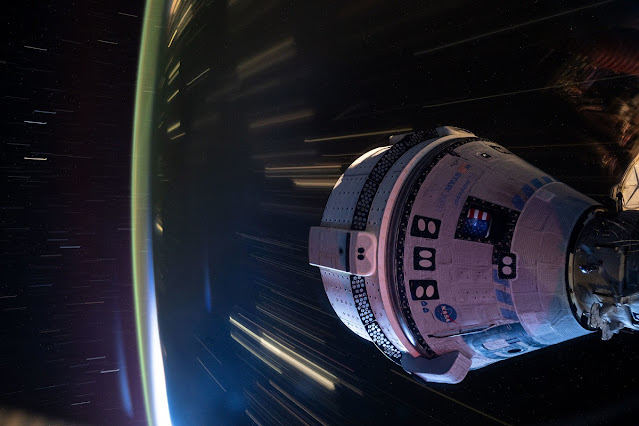Since I first heard of it in 2021, I've been trying to keep on top of the Mars Sample Return (MSR) mission originally conceived as an add-on to the Perseverance Rover (and the Ingenuity helicopter) currently on Mars. The idea has been that Perseverance would save particularly noteworthy samples of rocks or other things it comes across on Mars, stored inside the rover. At some time later, the MSR mission would rendezvous with the rover, they'd transfer the samples and MSR would return the samples to Earth.
The problem is that the mission is exceptionally expensive and NASA has been
concerned it's essentially not doable. The numbers being talked about to do
the mission were up to $11 billion. Briefly, in September of '23, NASA
received a report from an independent review board saying that the MSR Mission
was unworkable in its current form and wasn't feasible on the schedule and
costs they were working under. They recommended the issues be studied.
The studies were disclosed on April 15th, and the agency said everything but that nasty word “cancelled,” ending
instead with saying they will seek “out of the box” ideas in a bid to reduce
the costs and shorten the schedule for returning samples from Mars.
On June 7, NASA selected seven companies to provide 90 day studies, valued at up to $1.5 million each, to examine different concepts that could reduce the cost or improve the schedule for MSR. Those companies are Aerojet Rocketdyne, Blue Origin, Lockheed Martin, Northrop Grumman, Quantum Space, SpaceX and Whittinghill Aerospace.
Since 90 days - three months - from June 7 is approximately September 7 is when the studies are to be submitted, and they've probably barely started, it's not surprising that nothing has been formally released as ready “for prime time” and to be talked about. Fortuitously, this week is the AIAA ASCEND Conference, being held in Las Vegas. (That's Some of those seven companies are present for the conference and released some information. Jim Green, former NASA chief scientist, spent some time in the conference on July 30 that featured three of the companies selected for those awards. Neither the companies nor NASA had released details about their studies beyond the titles of their proposals selected by the agency in June.
Some are looking at ways to revise the Mars Ascent Vehicle (MAV), the rocket that will be delivered to the surface of Mars by a lander that will then launch the samples collected by Perseverance into orbit. NASA, in its request for proposals, highlighted the MAV as a specific area of interest to the agency.
The MAV, as currently designed, is a two-stage rocket using solid motors that is about three meters tall. “We’re going to study how to best optimize going smaller,” said David McGrath, senior fellow at Northrop Grumman, about his company’s study.
...
Quantum Space, a startup developing spacecraft that can operate in cislunar space, is focused on another element of MSR, the final return of samples to Earth. Ben Reed, co-founder and chief innovation officer of the company, said their study is looking at ways to simplify the Earth Return Orbiter (ERO), the ESA-developed spacecraft that will pick up the sample canister, known as the OS, placed in Mars orbit by the MAV and carry it back to Earth.
The study, he said, is “leveraging the investments we have made in cislunar capabilities to allow ERO to only have to bring the OS, the sample canister, back to lunar orbit.” That canister would then be picked up by a version of his company’s Ranger spacecraft for an “anchor leg” back to Earth.
...
Other studies are looking more broadly at the overall MSR architecture. That is what Lockheed Martin is doing, said Beau Bierhaus, principal research scientist at Lockheed Martin Space, making use of the company’s decades of experience developing Mars and other solar system missions and previous studies of MSR that date back to the 1970s.
One focus will be reducing complexity, he said. Past NASA flagship planetary missions typically have had no more than two elements, an orbiter and lander. MSR, he noted, has up to nine, depending on how an element is defined. “Complexity doesn’t scale linearly by the number of elements,” he said. “Each of these things is co-dependent, co-mingled, and there are ripple effects between them, so the complexity scales non-linearly.”
I'd like to leave it there, but I kinda just can't. I'm going to re-post the only other thing I've heard about proposed changes to the MSR mission; this time, from Boeing. You might have noticed that they weren't one of the companies chosen to provide their input in the paragraph up top. They just had to speak up.
You'll Never Guess What Boeing Proposed to Lower Mars Sample Return (MSR) Costs
Except you won't be surprised when I tell you their proposal was to "simplify the mission" by using the SLS. It reduces the mission to one flight of one (heavy lift) rocket, and you can argue that might be a good way to reduce risk. The problem is that SLS is the most expensive rocket flying in the world and NASA is trying to cut the cost of the MSR mission. Doesn't quite seem like the road to be going down.What's that saying about "when you only have a hammer every problem looks like a nail?" When you only have an SLS ...
A conceptual sketch from NASA/JPL-CalTech, showing a helicopter, Perseverance, and the ESA Mars lander on the bottom row, with the ESA's Earth Return orbiter, top row left of center, and NASA's Mars Ascent Vehicle (MAV) top row right. The upper left corner picture appears to be a gibbous Earth, but Earth couldn't possibly appear that big from Mars. I'll write that off to someone at JPL-CalTech being overly artistic.






















